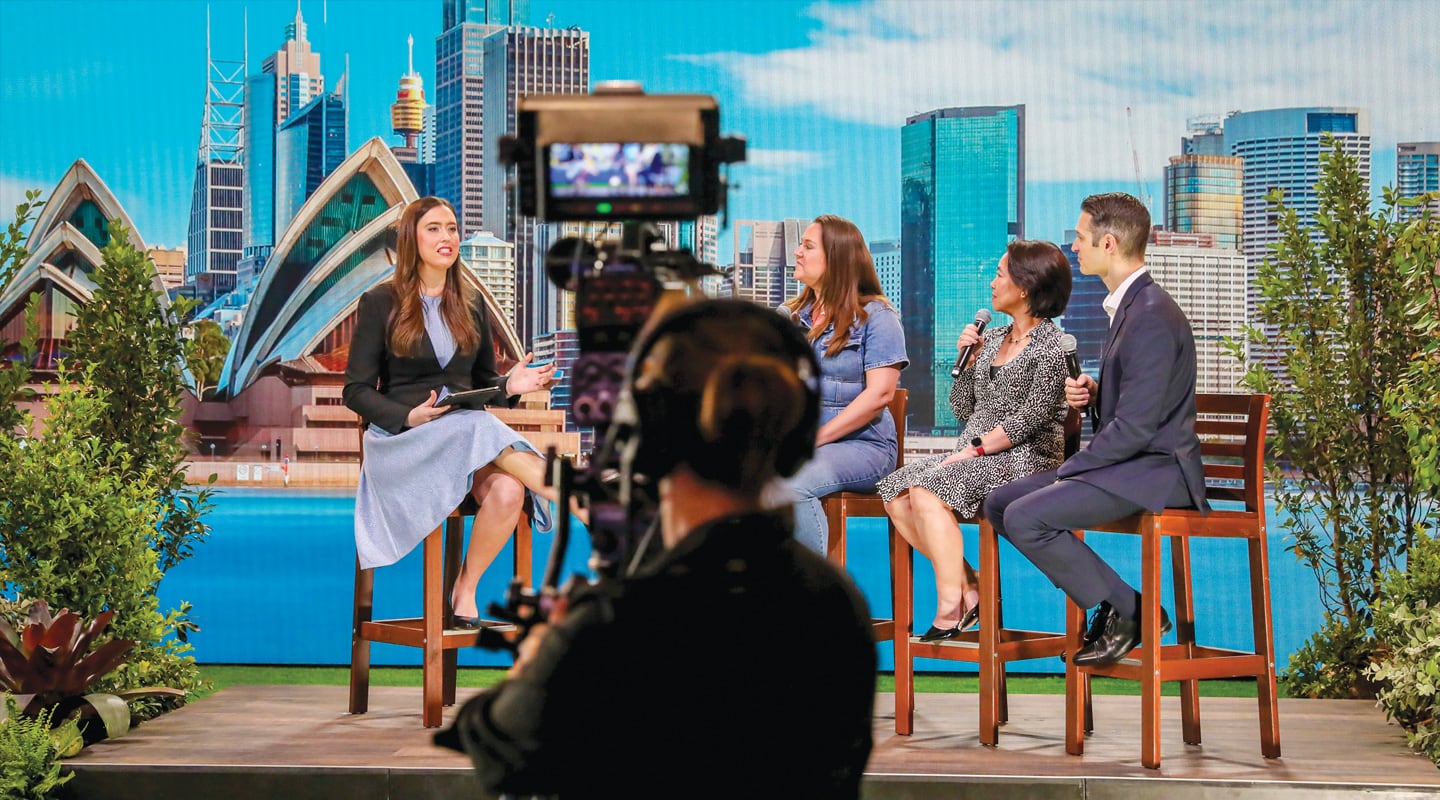
Force Field: Salesforce’s ICCS Live Event Goes Virtual
When Salesforce was compelled to close a huge live event, it didn’t mean cancelling it.
Text:/ Christopher Holder
If anyone had any doubts about time being a relative concept then they didn’t live through those early days of the Covid19 shutdowns.
Late February, the Salesforce international conference in Sydney was looming, but not as large as the shadow of the corona virus.
The organisers watched with consternation as other events began to cancel. The Cisco conference shut. As did the Global Mobile conference in Barcelona. The Salesforce execs needed to make a call. Come February 29 the event committee locked themselves away, determined to arrive at a decision. In that group was Nigel Ruffell director of The Company We Keep, the event producer.
“Salesforce didn’t want to run the event if it meant endangering anyone or excluding anyone, but they didn’t want to cancel — there had to be way to innovate, and broadcast the show in a safer and new way. The event already had the run of the ICC Sydney, so we turned the event on its head and transformed the ICCS effectively into 11 broadcast studios for a virtual event.”
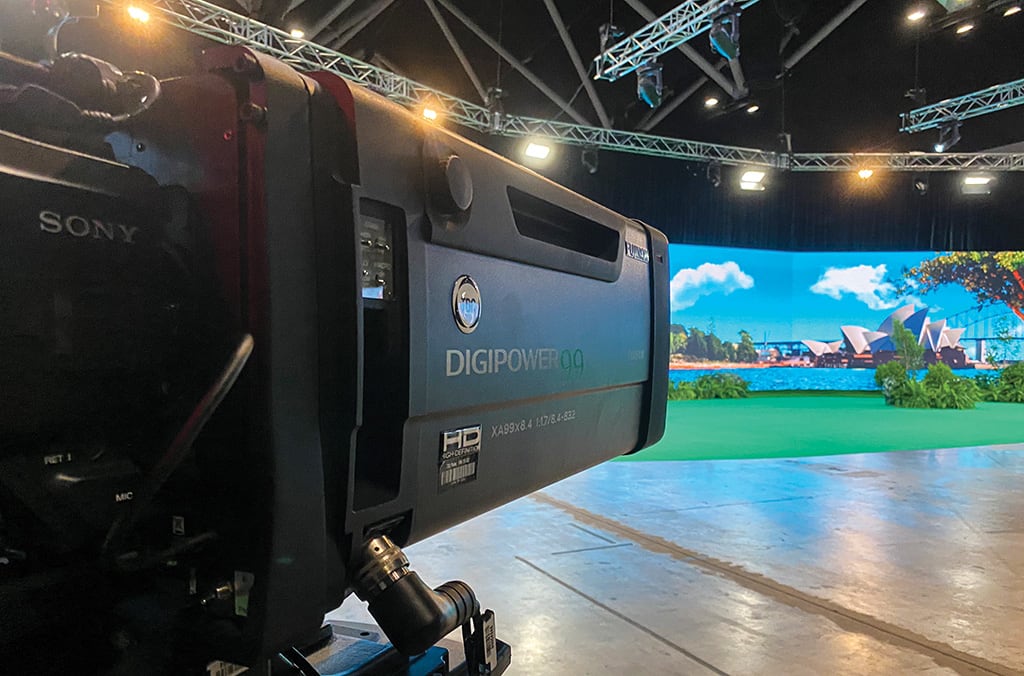
VIRTUAL VIRTUE
For some time, live streaming has become a key piece of conferences and events. That said, they’re more often than not, an adjunct. Live streaming is great if an event is oversubscribed, but no one wants live streaming to replace being physically present.
Salesforce conferences had become huge events (booking out all the expo space of the ICCS is no trivial matter) and are all about the advantages of rubbing shoulders with other movers and shakers. To turn its showpiece conference into a virtual event was just as much a philosophical J-turn as it was a logistical and technical one — not only would live streaming be a feature of the re-imagined event, it would be the feature; and what’s more it would be more than a stop gap, it had to be amazing.
But time wasn’t on anyone’s side.
In little more than a week, the Salesforce events team; Nigel Ruffell’s team; and the switched-on crew of key suppliers were able to pull together an extraordinary virtual event using the ICCS as a giant, multi-room sound stage, TV and broadcast studio.

TDC led the technology charge supplying and manning all the broadcast equipment and LED. In 2019 TDC had supplied a massive 40K pixel-wide, 100m+, 22 projector blend as the showstopper. In 2020, the plan was to ratchet up the wow factor even further. Of course, those plans were shelved and TDC had to turn its technical plans around.
“Instead of two large convention centre rooms for thousands of people to attend, we basically made seven TV studios, We dropped the mega projection, however we significantly increased the LED, cameras and room control equipment to be able to run many rooms simultaneously from a central control location.”
The other key technical supplier was Riedel Australia, which took care of the video transmission backbone with its MediorNet platform and the wireless comms with its Artist and Bolero system.
“Pivoting to a virtual event required a whole different range of skills and technologies,” noted Nigel Ruffell. “Starting with the presenters. Salesforce worked with the guest the speakers to hone their delivery — talking to a room of 5-6000 people requires a totally different approach to a live stream. We live streamed nearly 50 presentations and we recorded many more for on-demand consumption.”
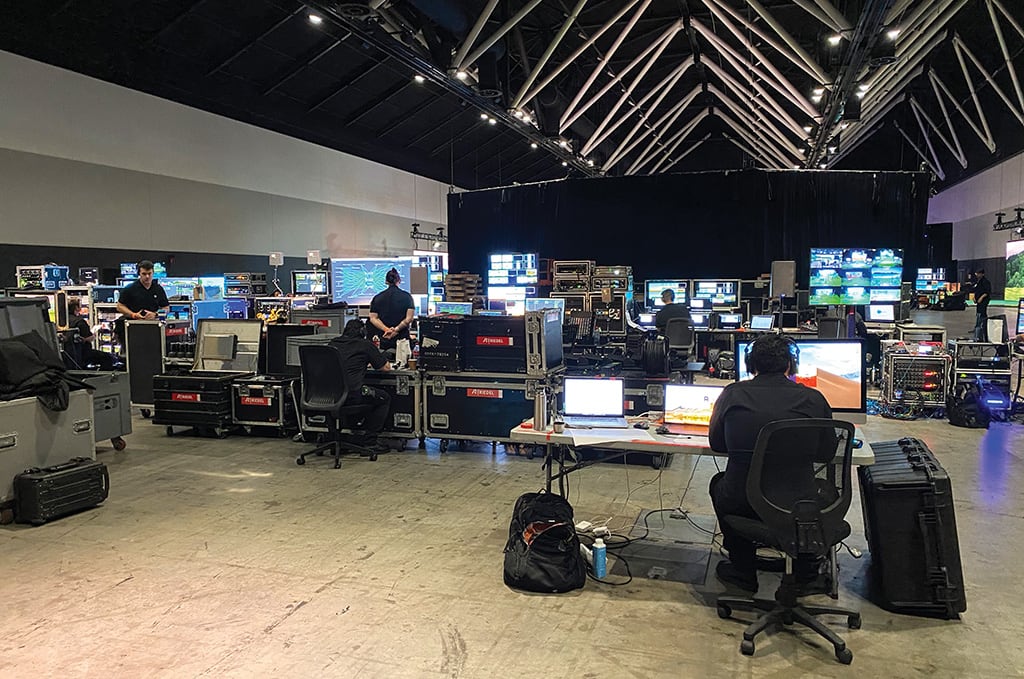
FIBRE: MADE FROM THE RIGHT STUFF
Riedel Australia has been a key supplier to the Salesforce conference and witnessed the event grow.
“This is our third year of involvement and this year’s conference was shaping to be the biggest yet,” notes Riedel’s Australian general manager, Chris Johnson. “We had our equipment prep’ed and ready to go when we got the call from Nigel to say the event was going virtual. It’s a tribute to the flexibility of the MediorNet platform that we didn’t need to start our preparations from scratch. Yes, we needed to reconfigure but MediorNet was ready to take on the fresh challenge.”
Riedel Australia’s project manager, Jason Jones picks up the story: “Previous Salesforce conferences had a video component but it was reasonably basic — perhaps, two cameras to capture the session and a powerpoint display. The only live-streamed sessions were the keynotes.
“This year, not only were the breakout sessions being live streamed with multiple cameras but there were multiple streams of sessions being streamed concurrently. So, the video requirements were intense.”
The advantage of the Riedel MediorNet platform is its flexibility and scalability. MediorNet nodes can be dropped wherever the requirements of the event demands and daisy-chained with runs of single-mode fibreoptic cable. The fibreoptic home runs ended up in draped off areas of the expo space which were turned into broadcast studio spaces stocked with three Grass Valley fly away camera switcher racks. TDC’s fully equipped HD01 outside broadcast truck provided further fire power.
Adam Fiddler, TDC’s Technical Operations Manager: “Due to the vast size of the venue and large amount of video and audio signal distribution required for the event we integrated our systems seamlessly into Riedel’s fibre network which allowed us to have total control of the system and gave us a lot of flexibility when it came to managing the massive video network and multiple records — with embedded audio channels for each room — from our centralised control area.
“The video demands for an event such as this aren’t quite as predictable or tidy as other big events such as a sporting event,” continues Jason Jones. “Every breakout room has various video outputs, and requires incoming feeds such as countdown timers and Powerpoint confidence monitoring. The camera feeds are all brought back to the studios to be cut onto the streams. The video needs to be presented on multiviewer displays, while the venue will want a feed at times for its digital signage, for example. If you were to take a traditional router approach to this event, there would be incalculable miles of SDI going absolutely everywhere. And it would be inflexible. If you needed a new signal, then you’d need to run a new line. With MediorNet we were able to respond to the unexpected — just plug into the nearest MediorNet node with fibre.”
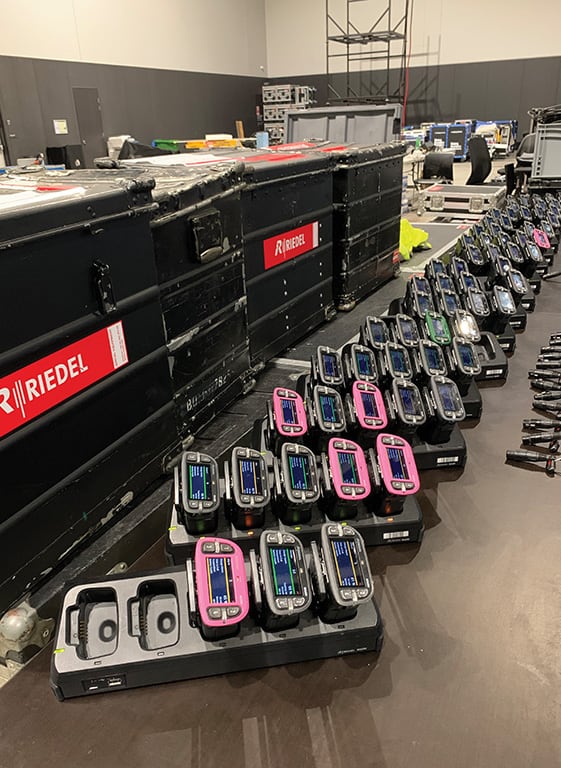
THE FUTURE: WILL CATCH ON
This was the first time a significant Salesforce event went entirely virtual, so all eyes were on the Sydney broadcast. Nigel Ruffell picks up the story again:
“We were blown away by the results. We hosted around 80,000 unique viewers on the Salesforce live platform. Across, the social media platforms — Facebook, Twitter, LinkedIn — we had up to 1.2 million people looking at the streams. The success has shown that in future there’s a place for both a live event and a virtual event. And the virtual event will be about extending the reach of the conference not cannibalising the live audience.”
The livestream has always played second fiddle in the events industry. If an event was full or if people couldn’t attend in person then organisers might put something in place so that no one missed out. But a virtual event like Salesforce Experience changes that mindset. The numbers Nigel refers to are compelling. And, as with anything web based, the depths of the metrics can be very seductive.
Salesforce now has an extraordinary database and knows quite a bit about who tuned in and where — far more than a voluntary on-site questionnaire.
Little wonder, then, that virtual event production is being given a real kick along by the market.
“We’re now looking at how to weave audience involvement and live Q&A more into our streams,” explains Nigel Ruffell. “We’re also looking at how to give sponsors and partners more visibility.
“I think what we’re seeing is a real fast-tracked development of virtual events. Covid19 has brought forward developments by years, in my opinion.”
“Will we see the phasing out of live events? I don’t think so. There’s something magical about being physically present. But incorporating the virtual into the live event really boosts our options as event producers. Beaming a CEO into an event from overseas, will now be more routine, for example. The experience doesn’t have to be compromised.”
TDC: tdc.com.au
Riedel Australia: riedel.net
Pollard Productions: pollardproductions.com.au
Harry the Hirer: harrythehirer.com.au
Additive: additive.lighting
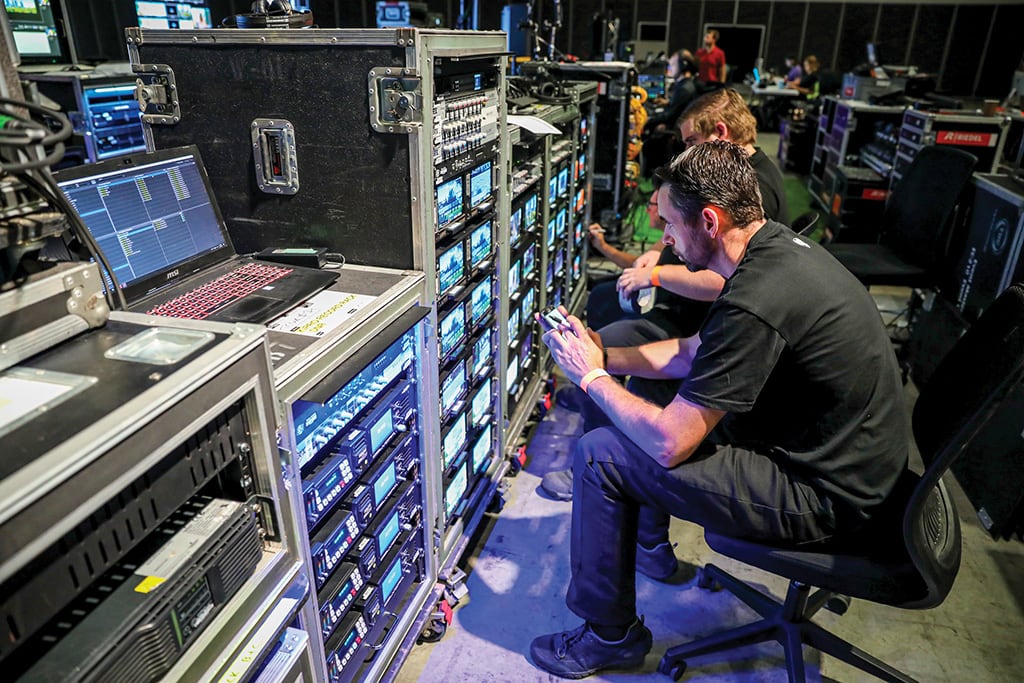
PERSONNEL STEPPING UP
Nigel Ruffell: “It was a massive team effort to stage this event in the way we did in such a short timeframe — and that all started with Salesforce’s willingness to take on the challenge. Experienced operators in TDC, really stepped up in an amazing way. Riedel did a fantastic job making the audio and video showed up where it should. Pollards with the physical build, Additive with the lighting plans, and Harry the Hirer really came through with the supply of the lights.”
Adam Fiddler, TDC’s Technical Operations Manager: “It was great to be a part of Salesforce Reimagined. Despite months of pre-production work on a what was to be large-scale live event, I was really impressed with our team’s ability to handle the change to bring this event alive in a new virtual space. Our experience in live events and broadcast solutions enabled us to pivot into the world of virtual events with confidence.”
Steve Cain, TDC’s Head Engineer & Media Server Specialist: “I am so proud of our whole team, working around the clock, so closely together and with our clients, to come up with a new way to ensure this show went ahead. We only had one objective: to deliver the highest of standards; be remain flexible to changes, as there were so many unknowns and evolving requirements each day; and deliver an amazing result for our valued clients.”
EQUIPMENT RIEDEL SUPPLIED
Artist Intercom distributed across the Mediornet TDM backbone 75
- Wireless Bolero belt packs
- 40 Intercom Panels
The Mediornet system transported over 300 video, audio and network signals, connecting eight remote broadcast studios redundantly across the fibre topology and back to a centralised control hub.
21 Mediornet frames were deployed consisting of MicroN, MetroN, Compact Pro and Modular units meshed together over 2.4km of temporary fibre.
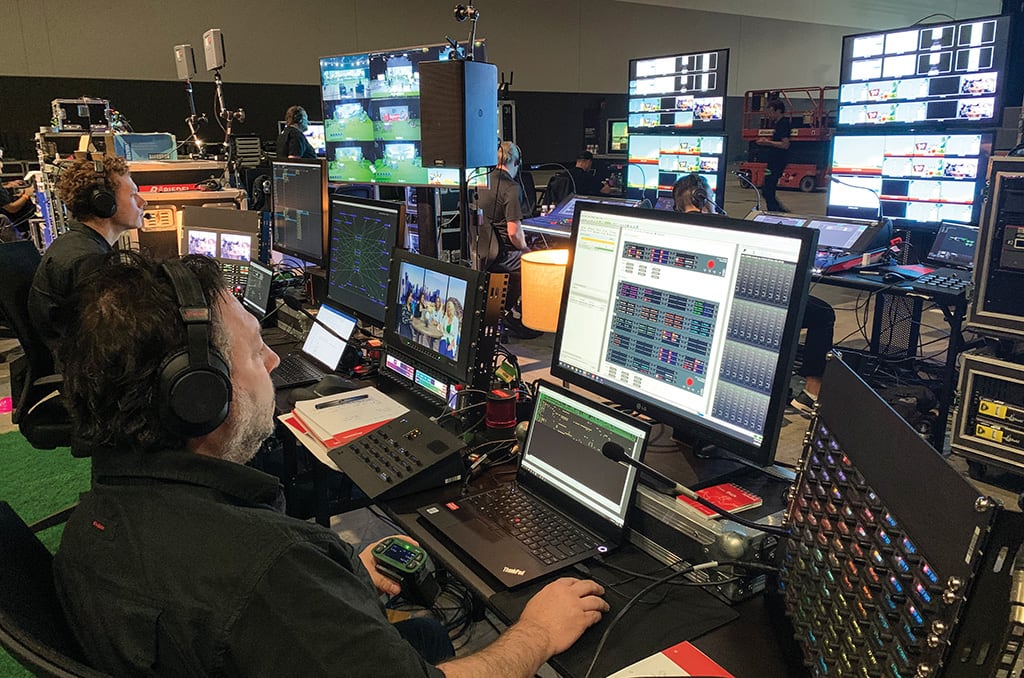
TDC SUPPLIED
HD01 Outside Broadcast truck
3× Grass Valley fly away camera switcher racks
20 Sony broadcast cameras
45 channels of record
30m × 4m 2mm LED screen for the Keynote stage
9× 4K Brompton processors to drive more than 20 million LED pixels
10× Barco Event Master E2 for control
Barco S3 multi-destination switchers
Disguise media servers




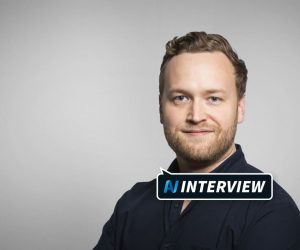


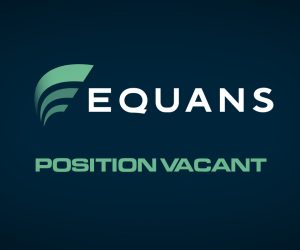
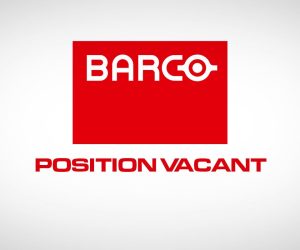
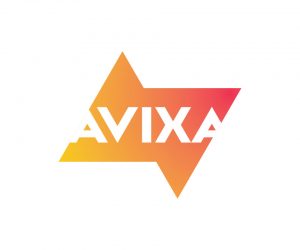
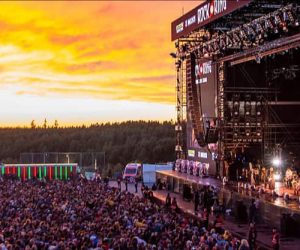
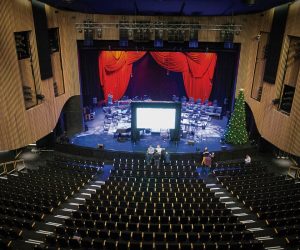
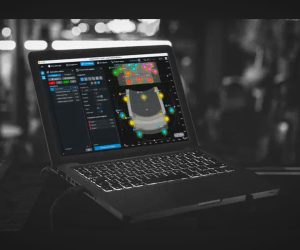


RESPONSES